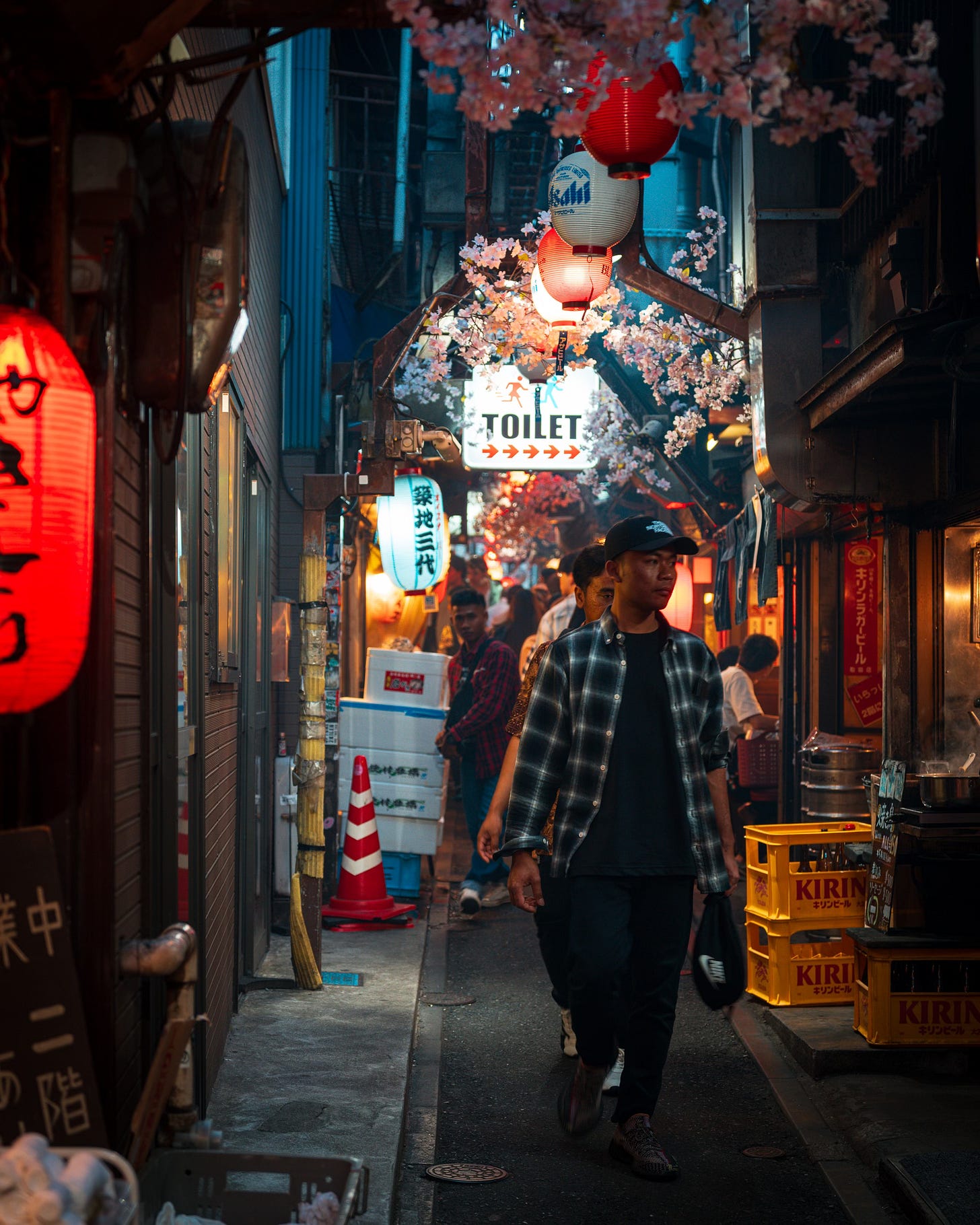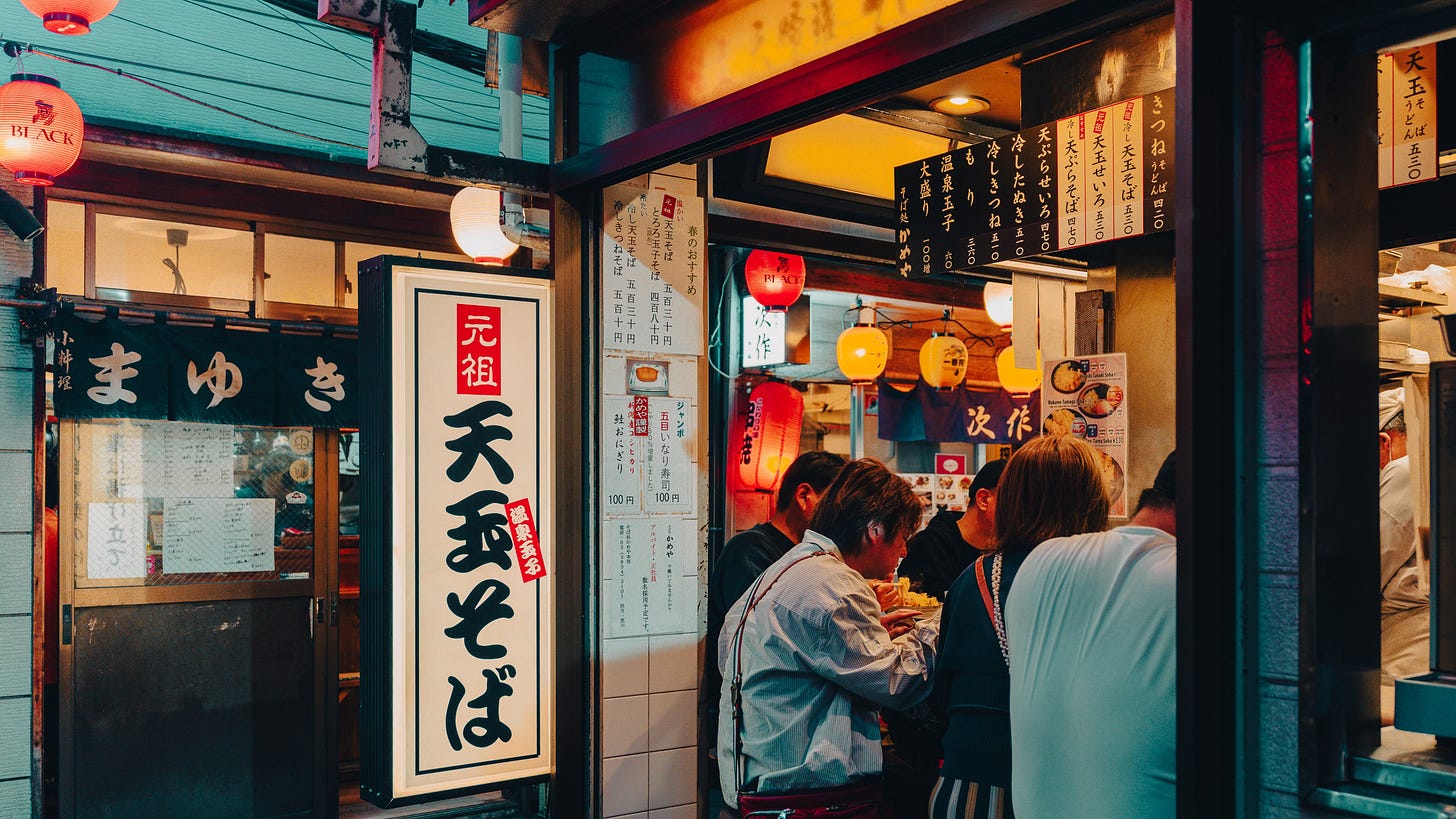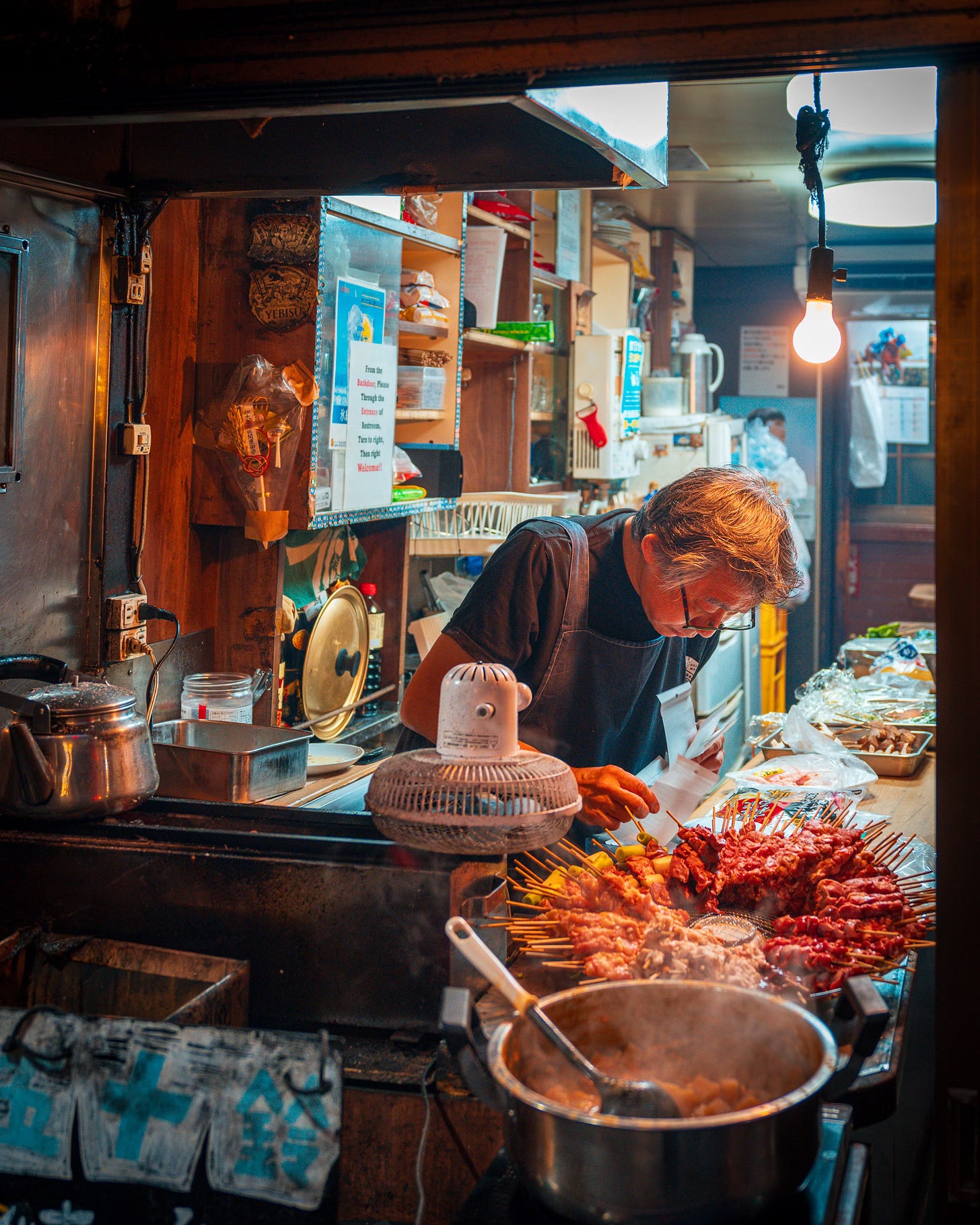Omoide Yokocho, Shinjuku, Tokyo – It’s Always About Fine-Grain Mixed Use
How I love to have a bit of Tokyo in London.

I was initially reluctant to visit this spot in Tokyo — not because I didn’t want to, far from it. Omoide Yokocho has everything I love to see and photograph. It is a network of narrow alleys lined with a variety of tiny restaurants, food stalls, and drinking establishments. Situated in the heart of Shinjuku, right next to the bustling Shinjuku Station interchange, it offers a stark contrast to the modern metropolis surrounding it.
Encircled by towering skyscrapers and dense urban development, Omoide Yokocho stands as a relic of old Tokyo — a time before smartphones and social media, when life was simpler and less hurried. It emerged in the aftermath of the Second World War, initially serving as a black market where hard-to-find food, drinks, and daily necessities were traded. Over time, it evolved into a cluster of eateries, separated by thin walls or simple curtains to maximise space and keep construction costs low.
Remarkably, it survived the construction of the modern Shinjuku Station complex — an incredible feat considering the astronomical land values in central Tokyo. It makes me wonder whether it was intentionally preserved by Tokyo’s city planners or if there’s an untold story of resistance, where local vendors and communities pushed back against developers eager to replace this historic alleyway with high-rise buildings.
Visiting Omoide Yokocho in the evening, when it truly comes to life, is an experience like no other. The glow of lanterns, stacks of beer crates, vibrant shop signs, graffiti-covered walls, and the maze-like alleyways create a sensory overload. It’s easy to lose your sense of direction — one moment you’re walking among skyscrapers, and the next, after crossing a wide road and passing beneath a sign, you find yourself in a completely different world.

However, like many once-hidden gems, Omoide Yokocho has been transformed by social media into a content creator’s paradise. Food bloggers, travel influencers, and local tour groups flood the area, eager to capture the ambience and share it online. Many visitors are simply curious tourists, snapping photos for their social media feeds rather than immersing themselves in the experience. As a photographer, I was concerned that the sheer number of visitors would make it difficult to capture the authentic essence of the place. I imagined a chaotic scene akin to a supermarket at Christmas, where everyone scrambles for the best spot.

To my surprise, my experience was far more enjoyable than I had feared. Though the alleys were busy, I was able to slow down, observe, and take photos that, to me, encapsulate the urban life of Omoide Yokocho — whether it was locals enjoying a meal, or visitors mesmerised by their surroundings.


The history and evolution of Omoide Yokocho illustrate an important urban planning principle: fine-grain mixed-use development. This concept, famously championed by Jane Jacobs, is what makes cities and neighbourhoods vibrant, dynamic, and resilient. Walking through places we love and reminiscing about memorable cities, we instinctively recognise what makes them special. The secret lies in their intricate, human-scaled environments — where diversity and activity thrive, creating a rich tapestry of urban life.


Moments like these, where I visit a foreign city, document a well-known place through my camera, and reflect on its unique qualities, fuel my desire to travel more, expand my horizons, and deepen my understanding of urban spaces. Yet, I can’t help but dream of having an Omoide Yokocho in a London neighbourhood — or, even better, designing and curating a space that captures the same spirit as these historic alleyways, nestled beside the busiest train station in the world.




Thank you very much for this presentation of such a interesting place. Your photos made me feel the local vibe. 🙏